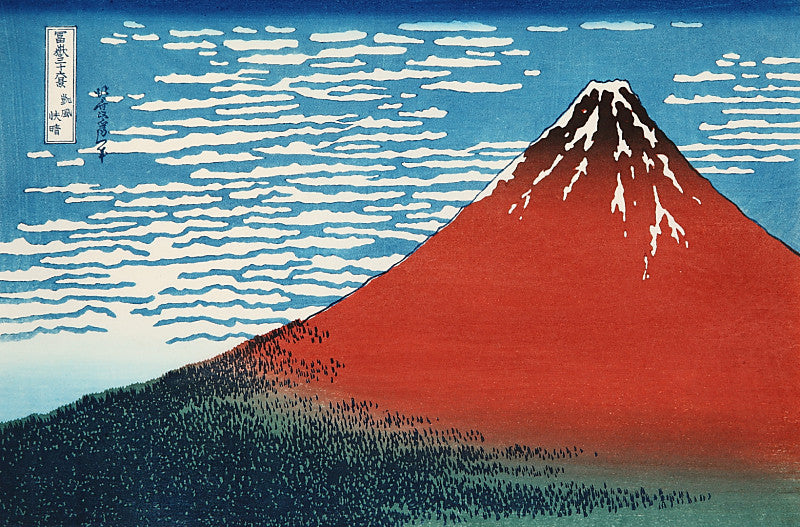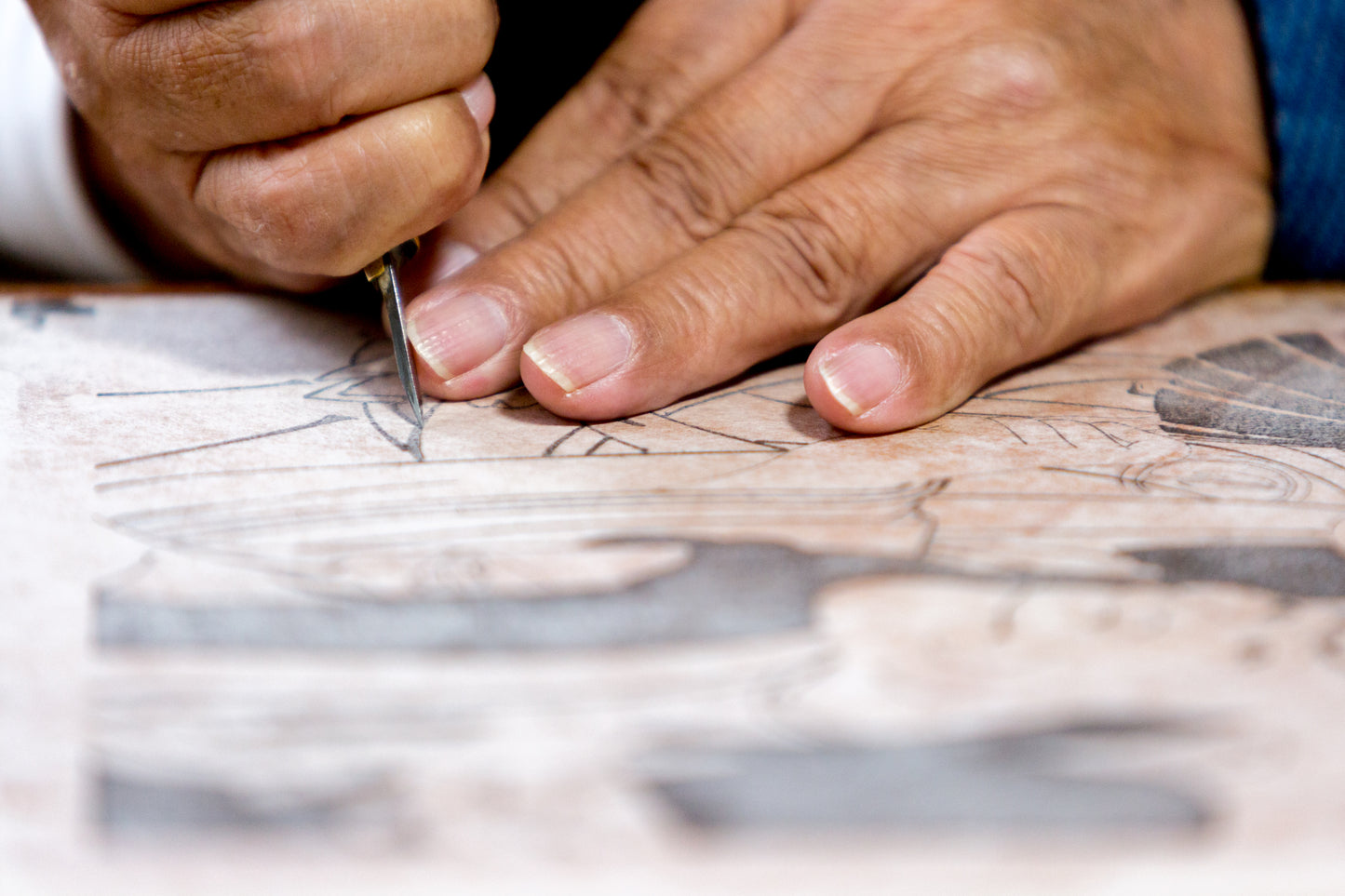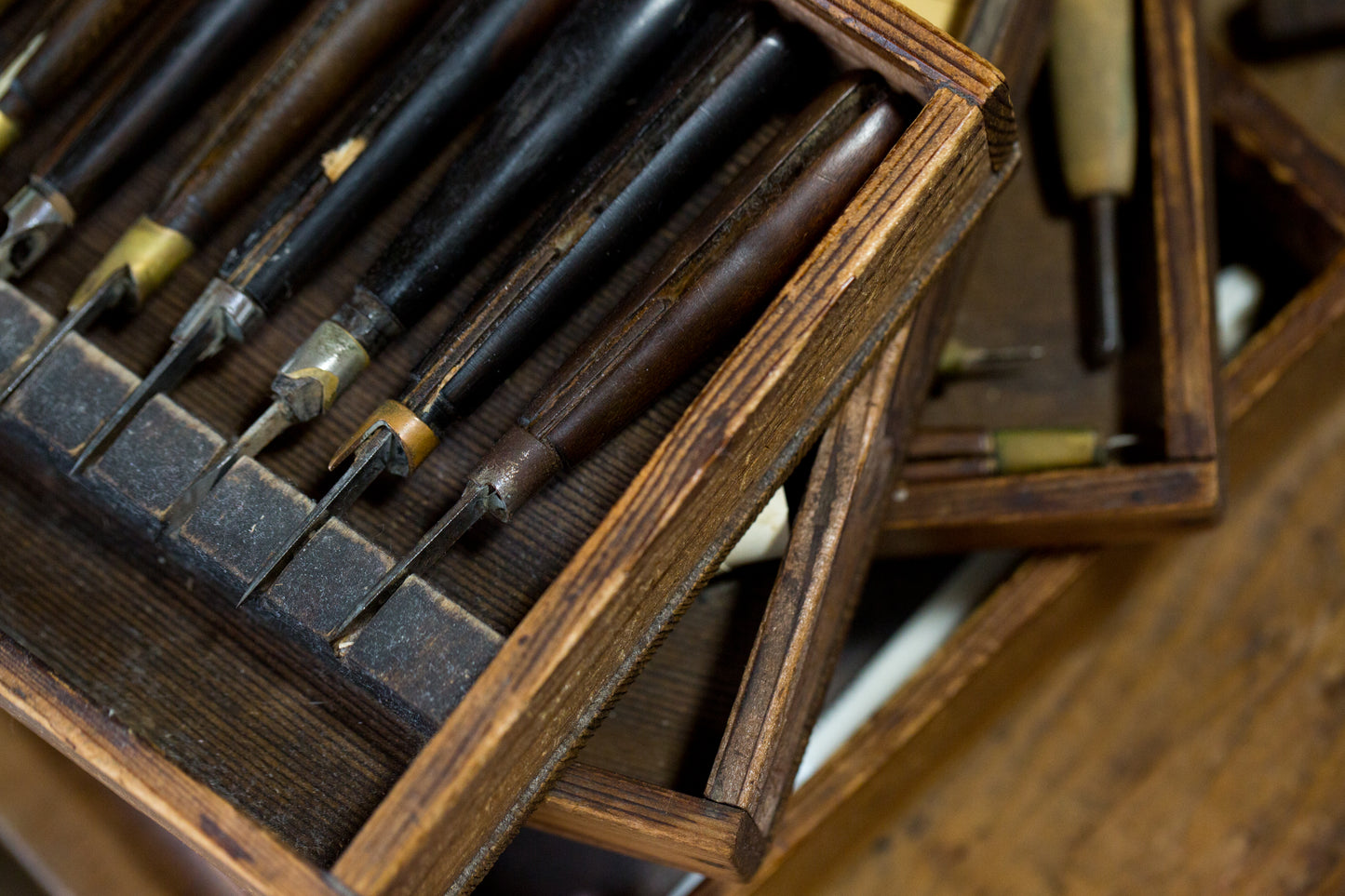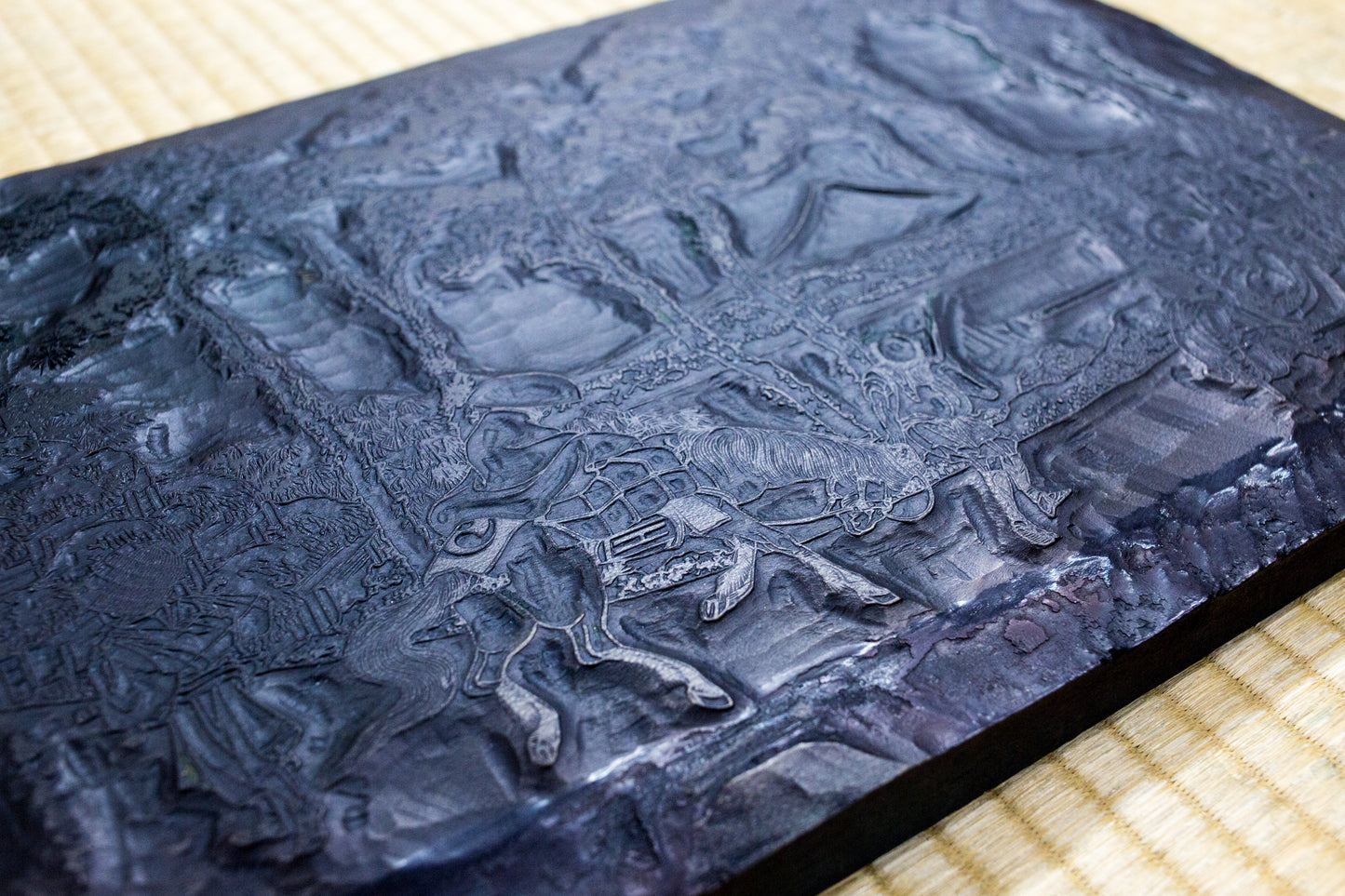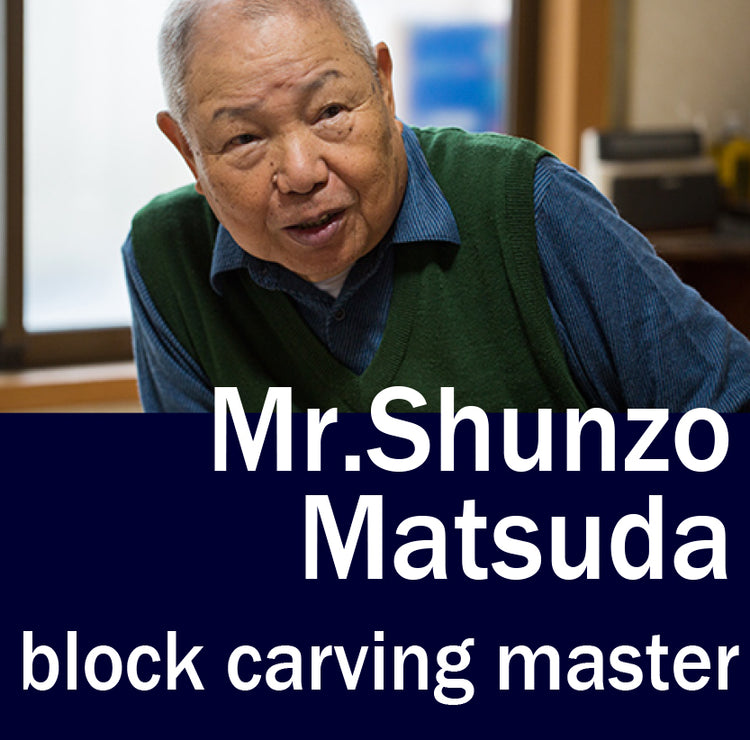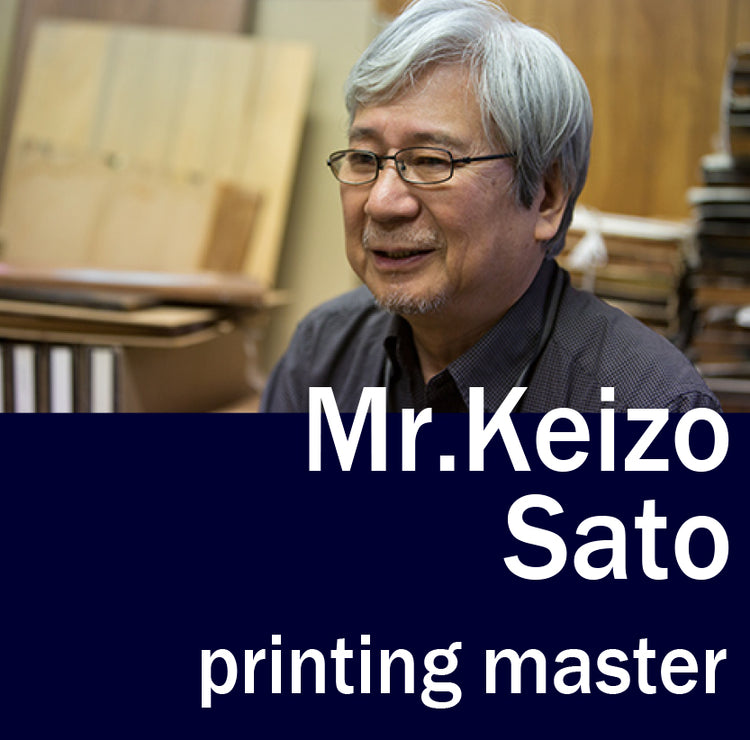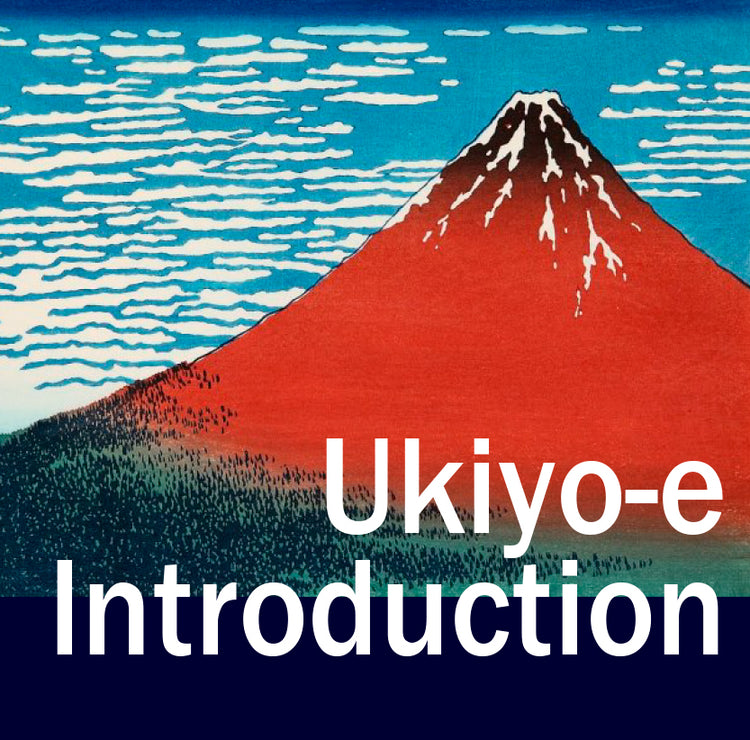Profile
Tell us the story of why you became a printing master.
You had something else you wanted to do.
Other than learning from your father like you did, how are woodblock printing master’s skills passed down?
As for baren, we heard the number of stores which sell baren is declining.
“Baren is a life-long tool” are very meaningful words. What is the life of a woodblock?
By taking good care of it for many years, woodblock printings have been loved for a long time.Looking back, is there anything you think that is a distinctive technique Ukiyo-e woodblock prints?
Do you think attention to Ukiyo-e woodblock prints abroad has been changing?
Tell us the challenges and accomplishments during doing woodblock printing work.

Using stirrer, put the paint on to the carved woodblock, and spread with brush

Place paper to match the mark on the woodblock

Rub the surface while putting all the weight on the baren

Take off paper from the woodblock after every layer of color is added

Omohan of “Tokaido, Hodogaya” from “The Thirty-six Great Views of Mt. Fuji”

Stirrer, paints, brush, and baren Important tools for woodblock printing masters They are like a part of the master

Using stirrer, put the paint on to the carved woodblock, and spread with brush

Spread paints with brush

Place paper to match the mark on the woodblock gently

Completed Beautiful Flower and Birds “A Mate in the Pond”

